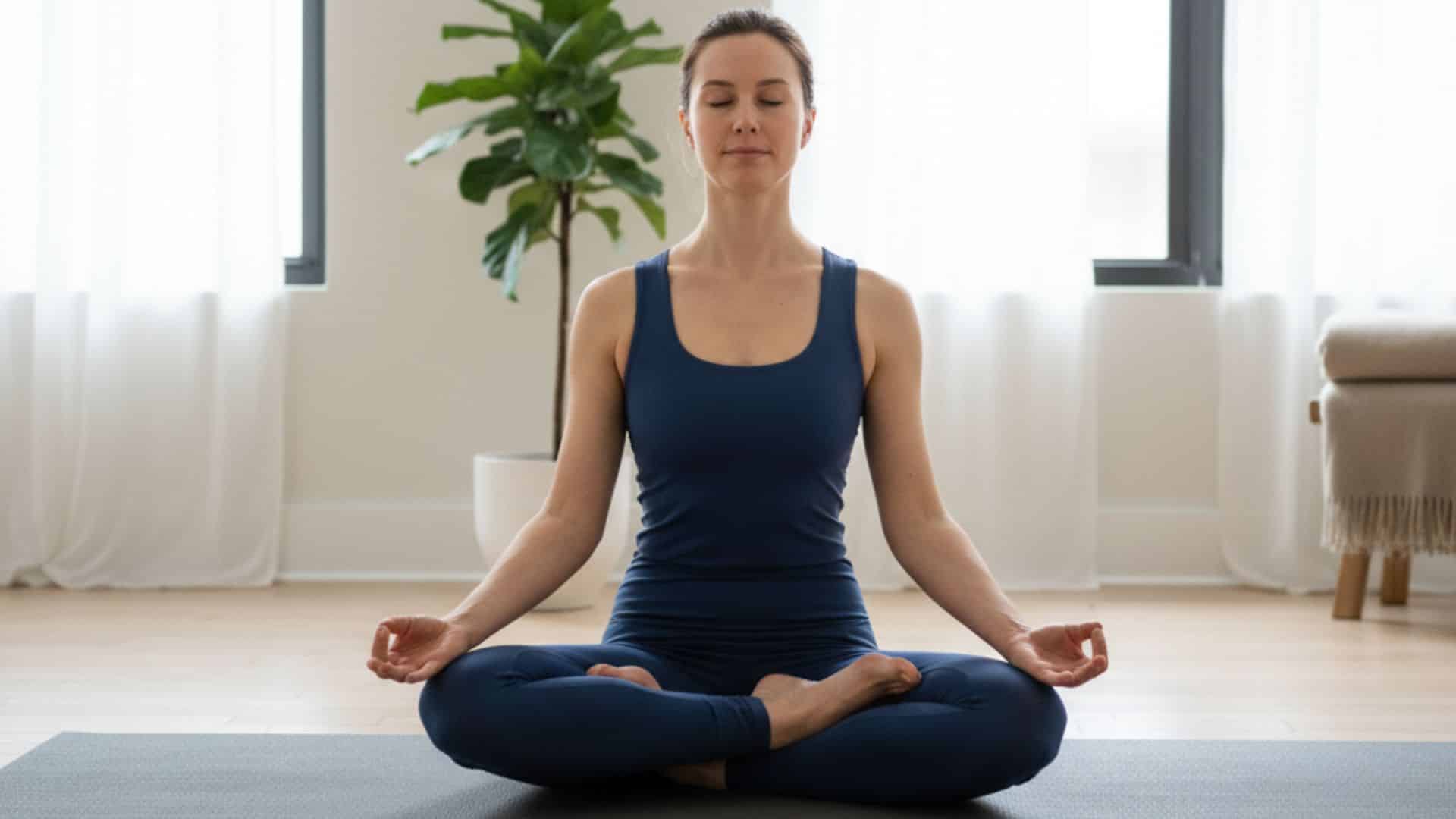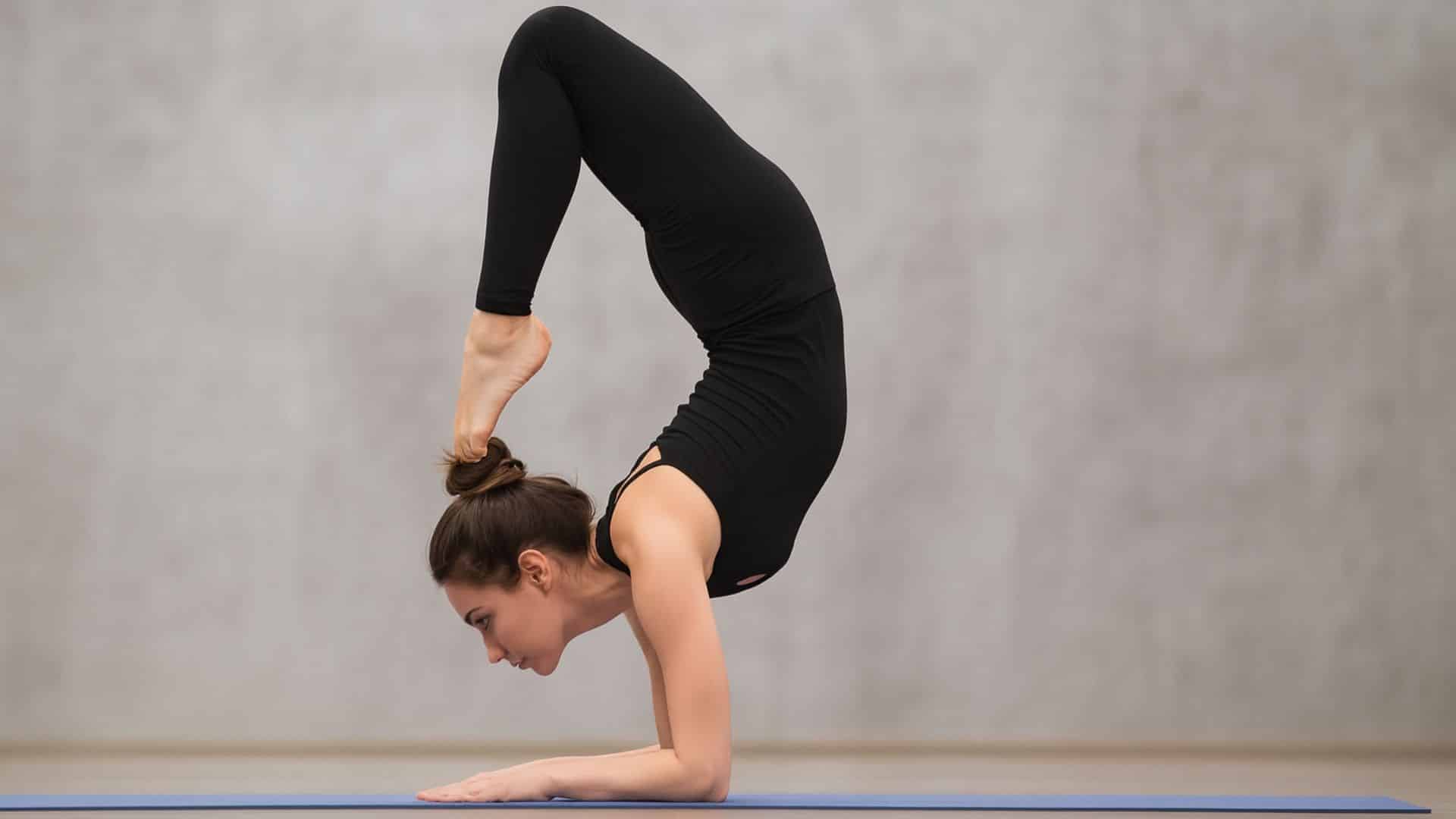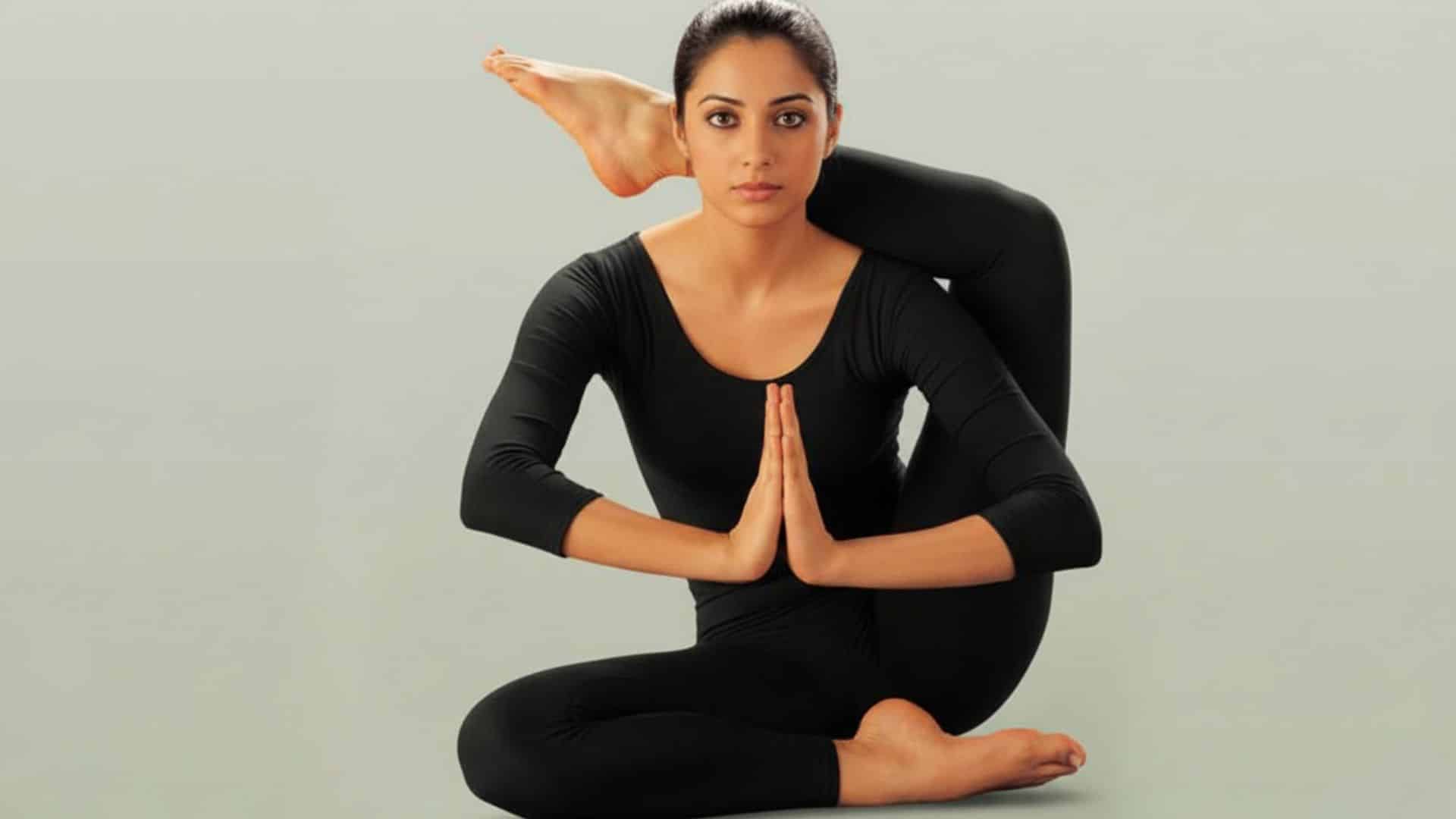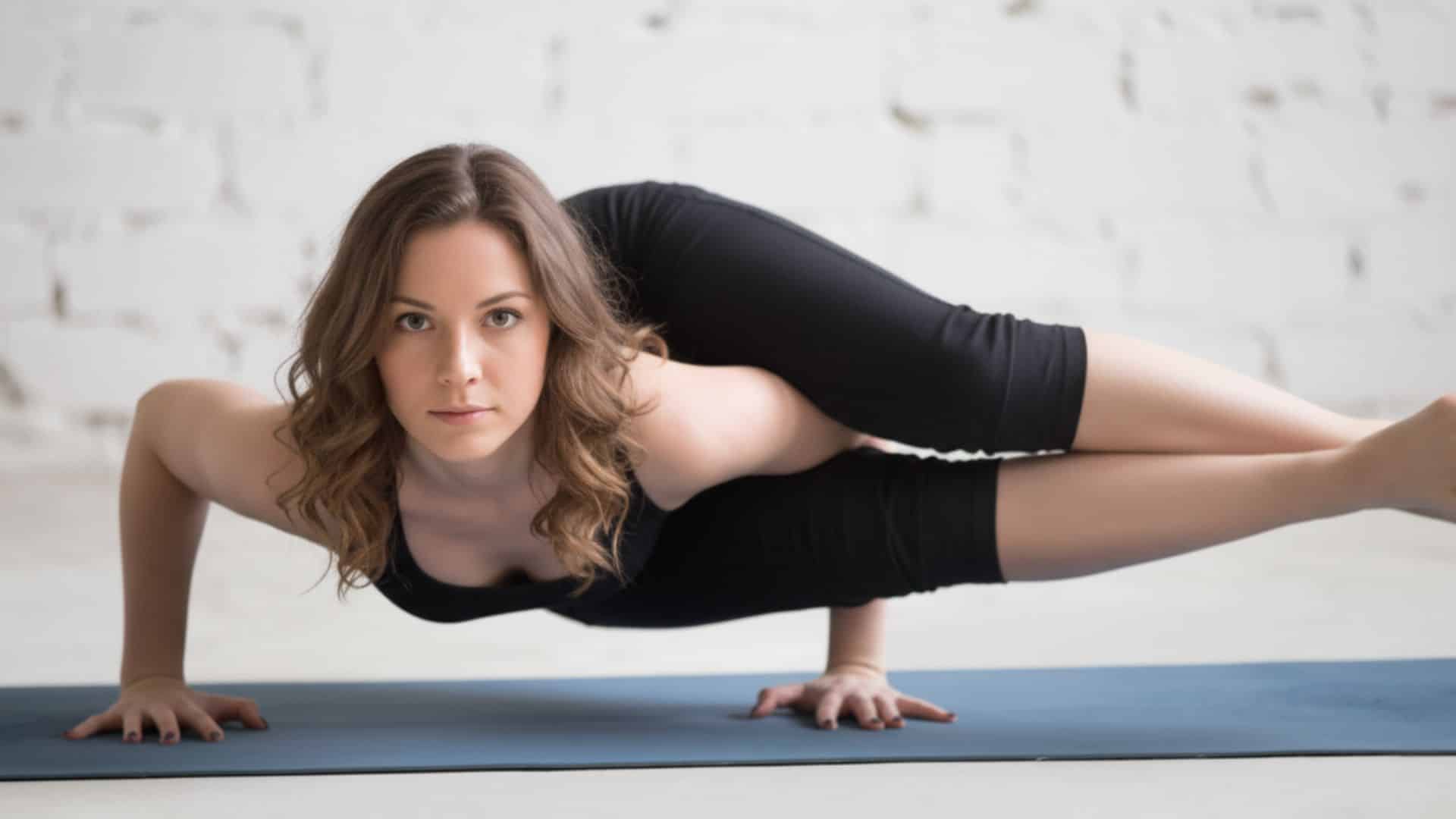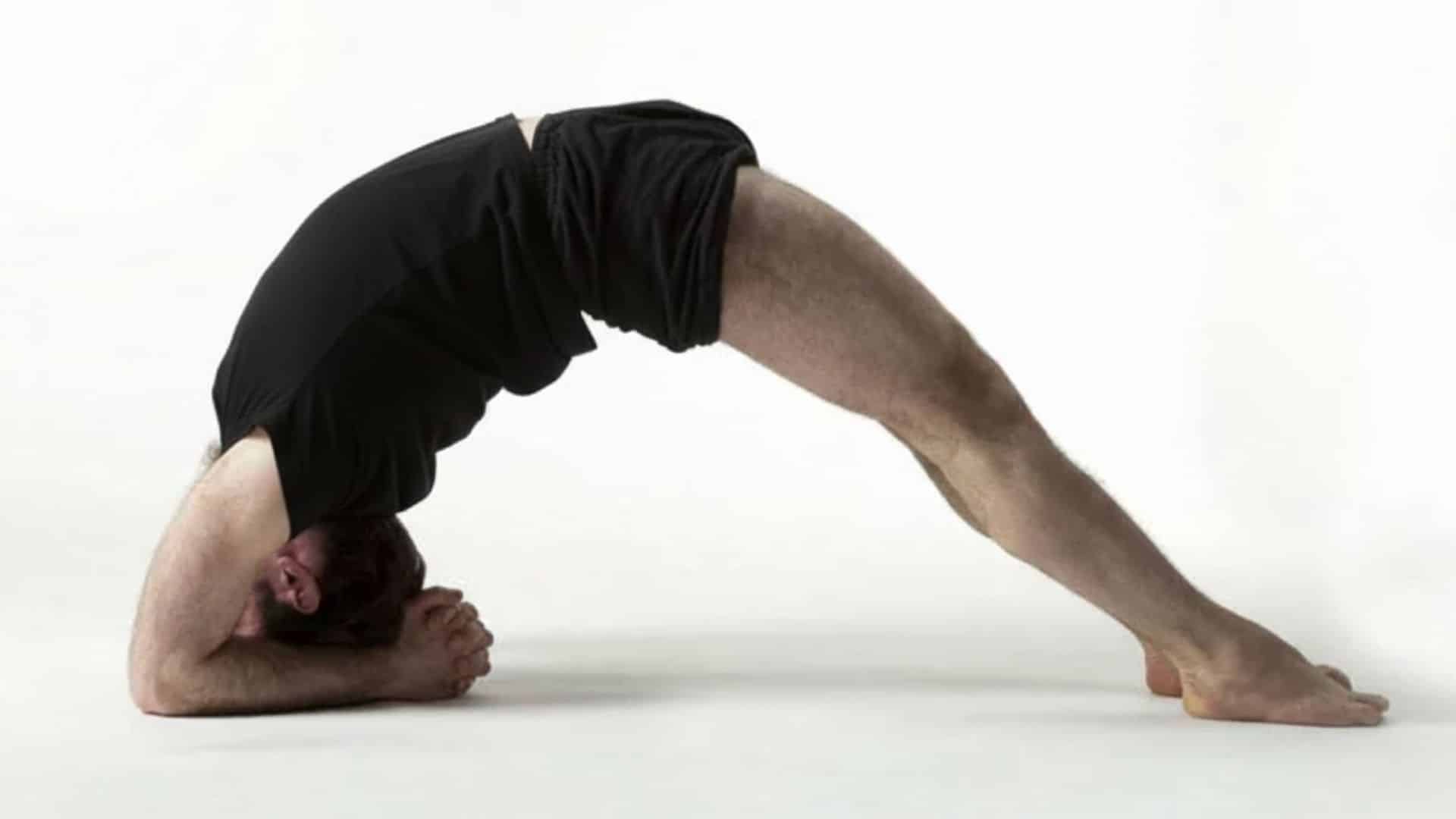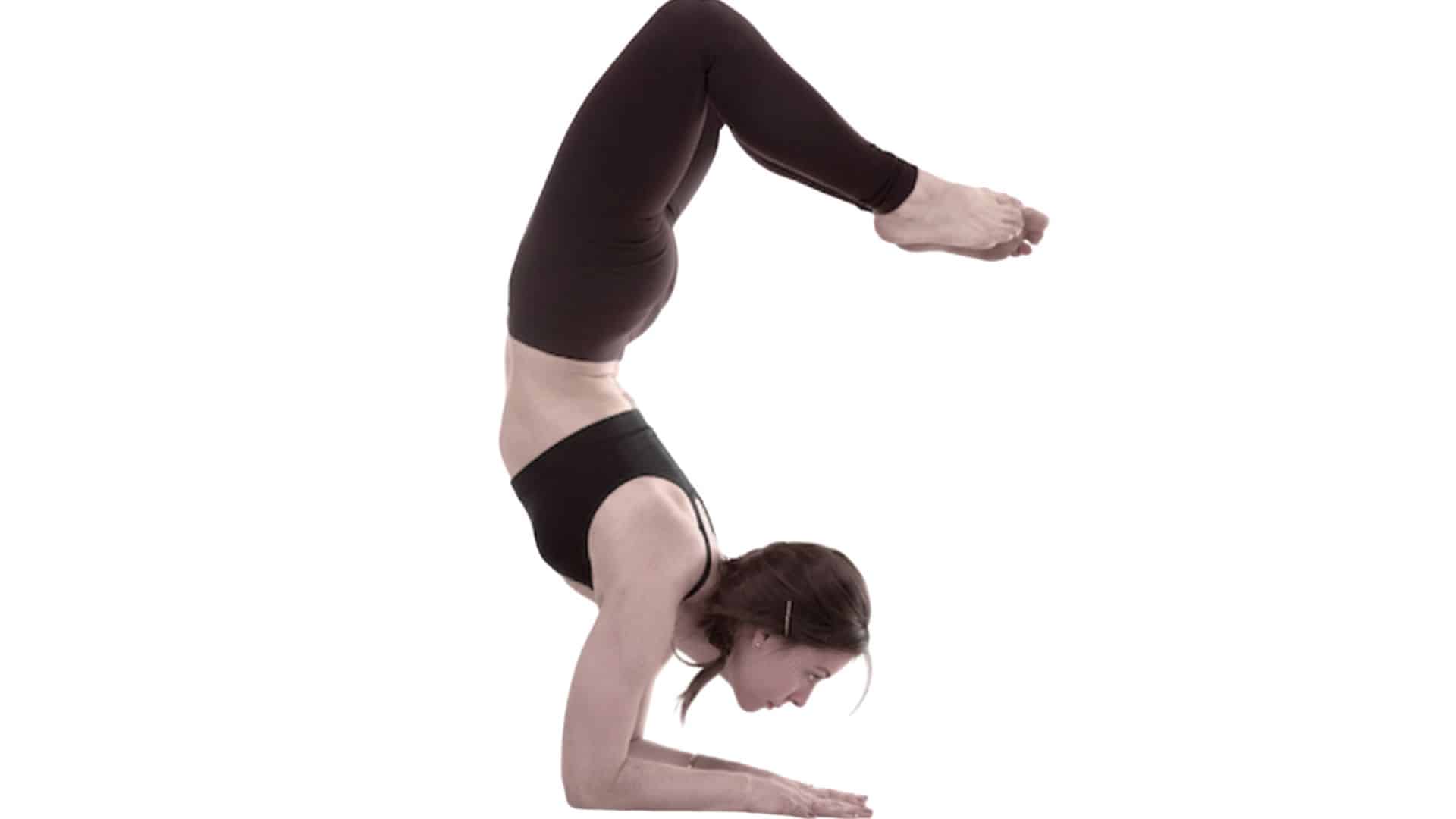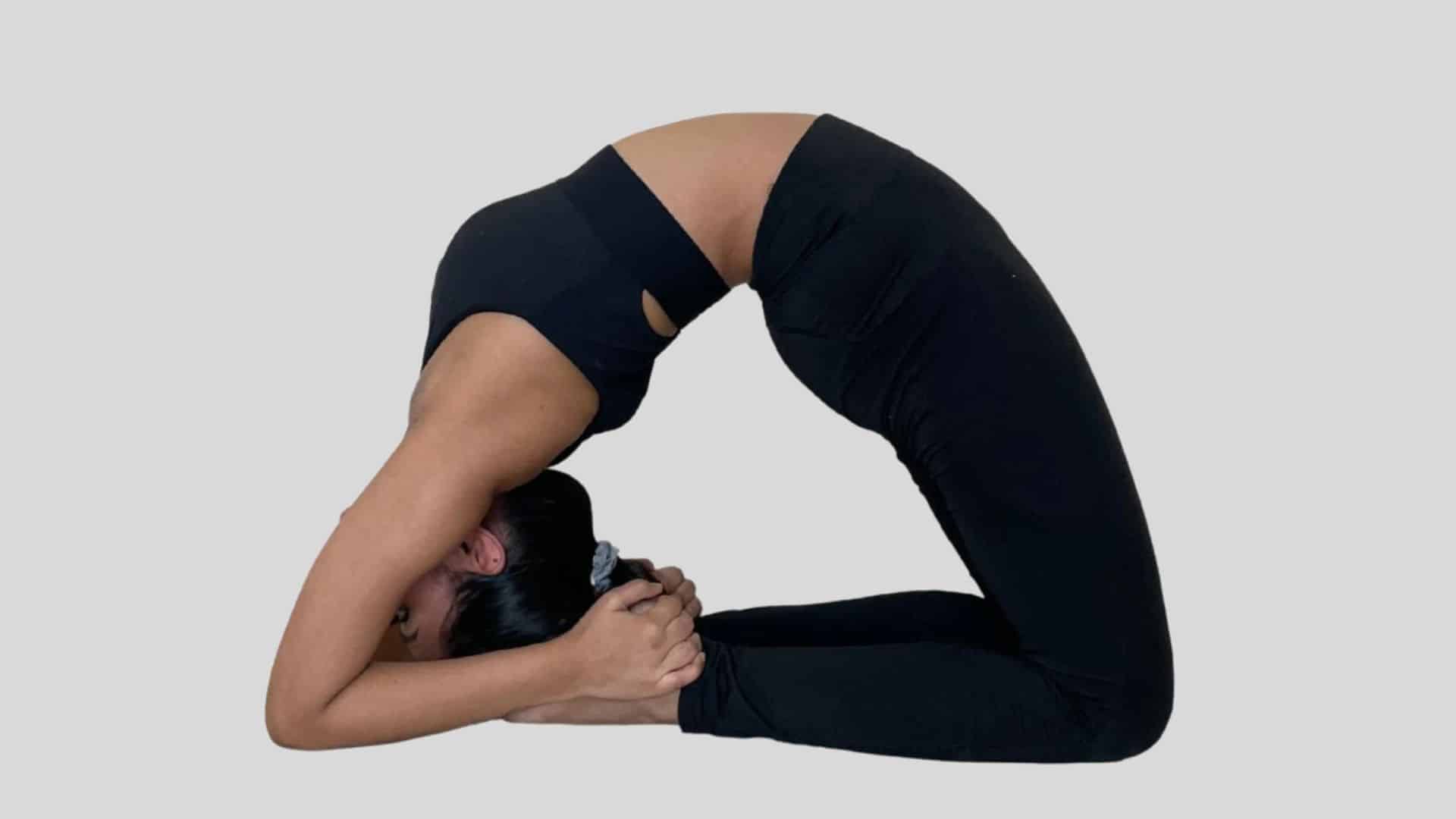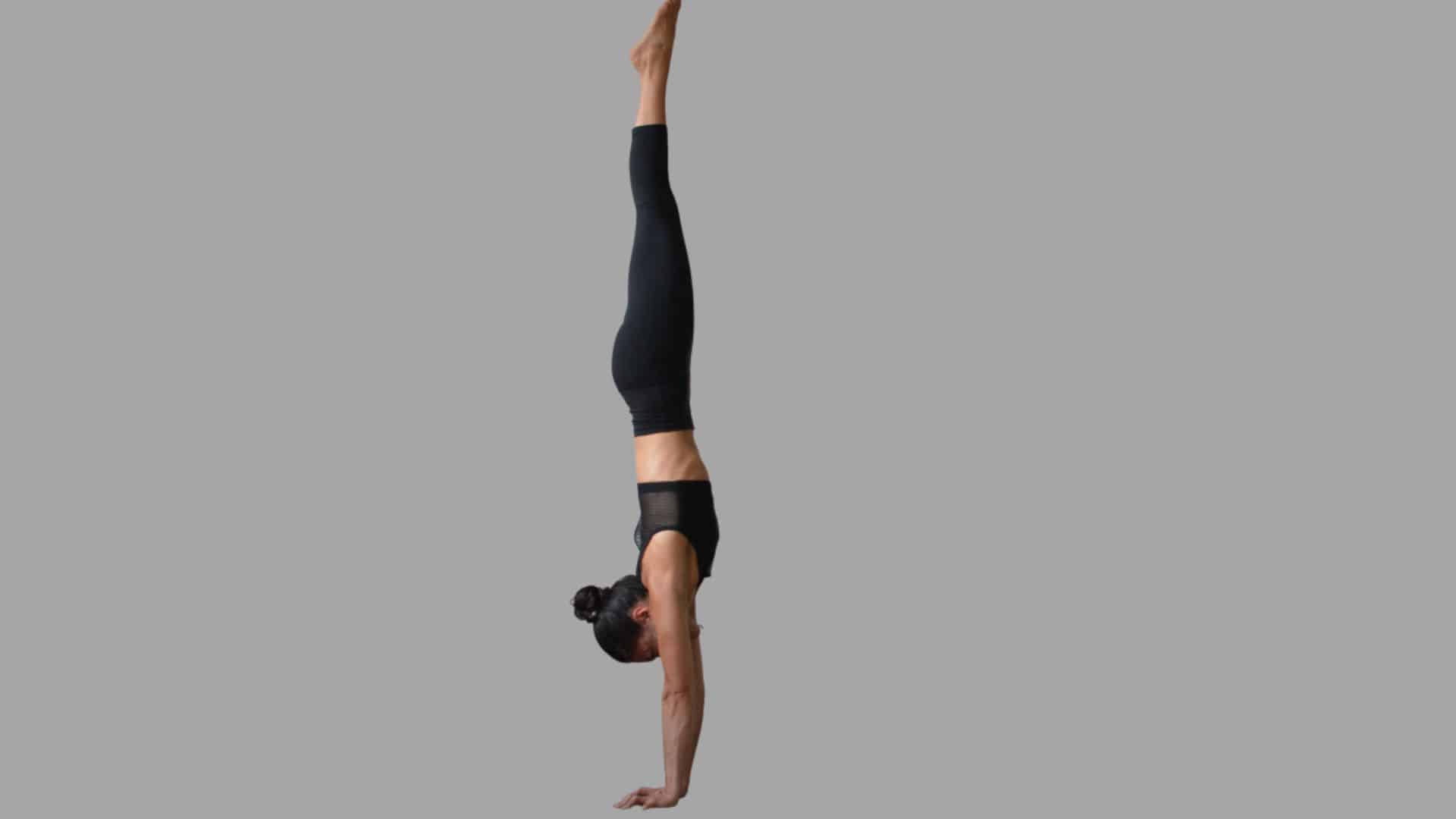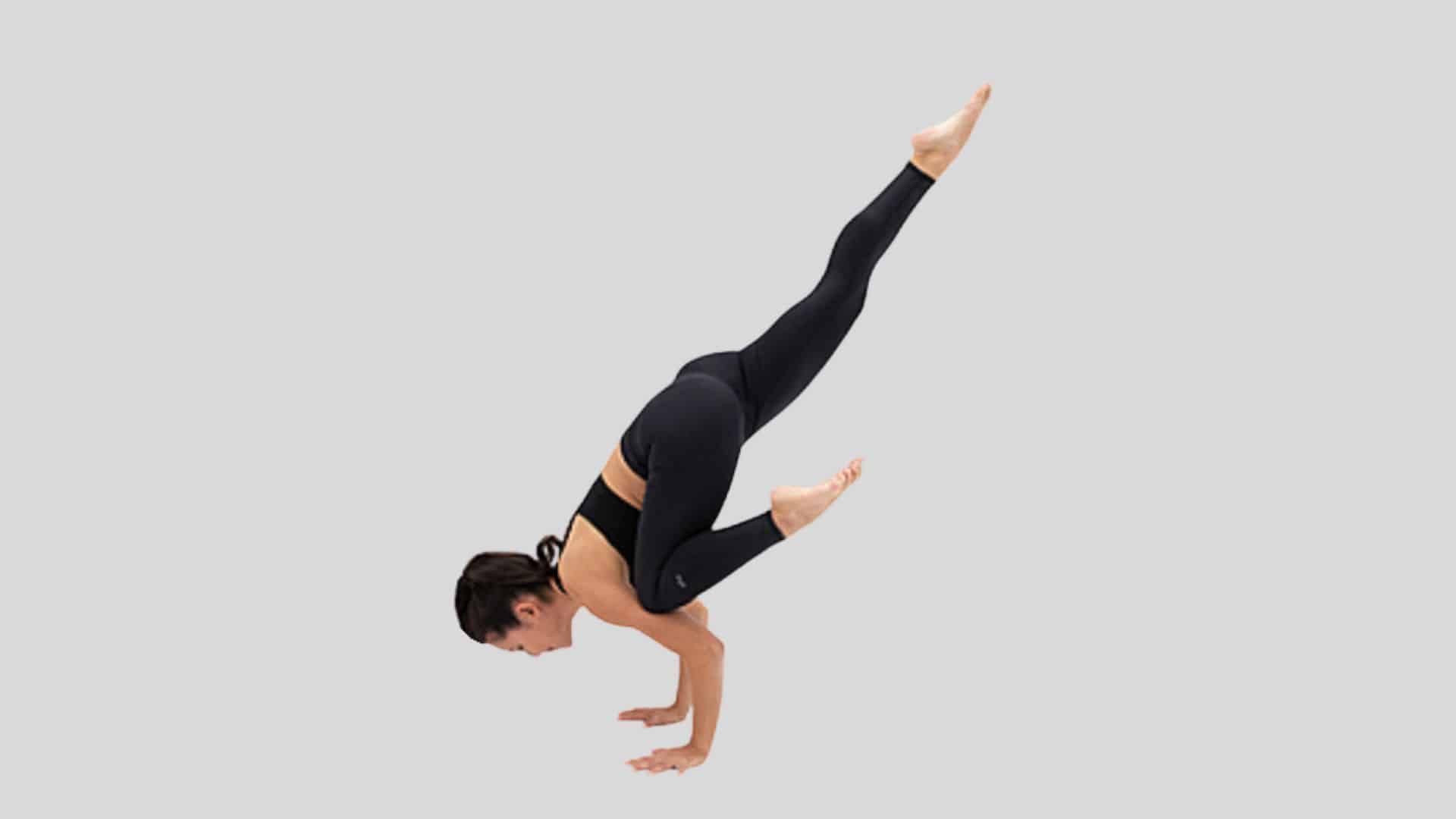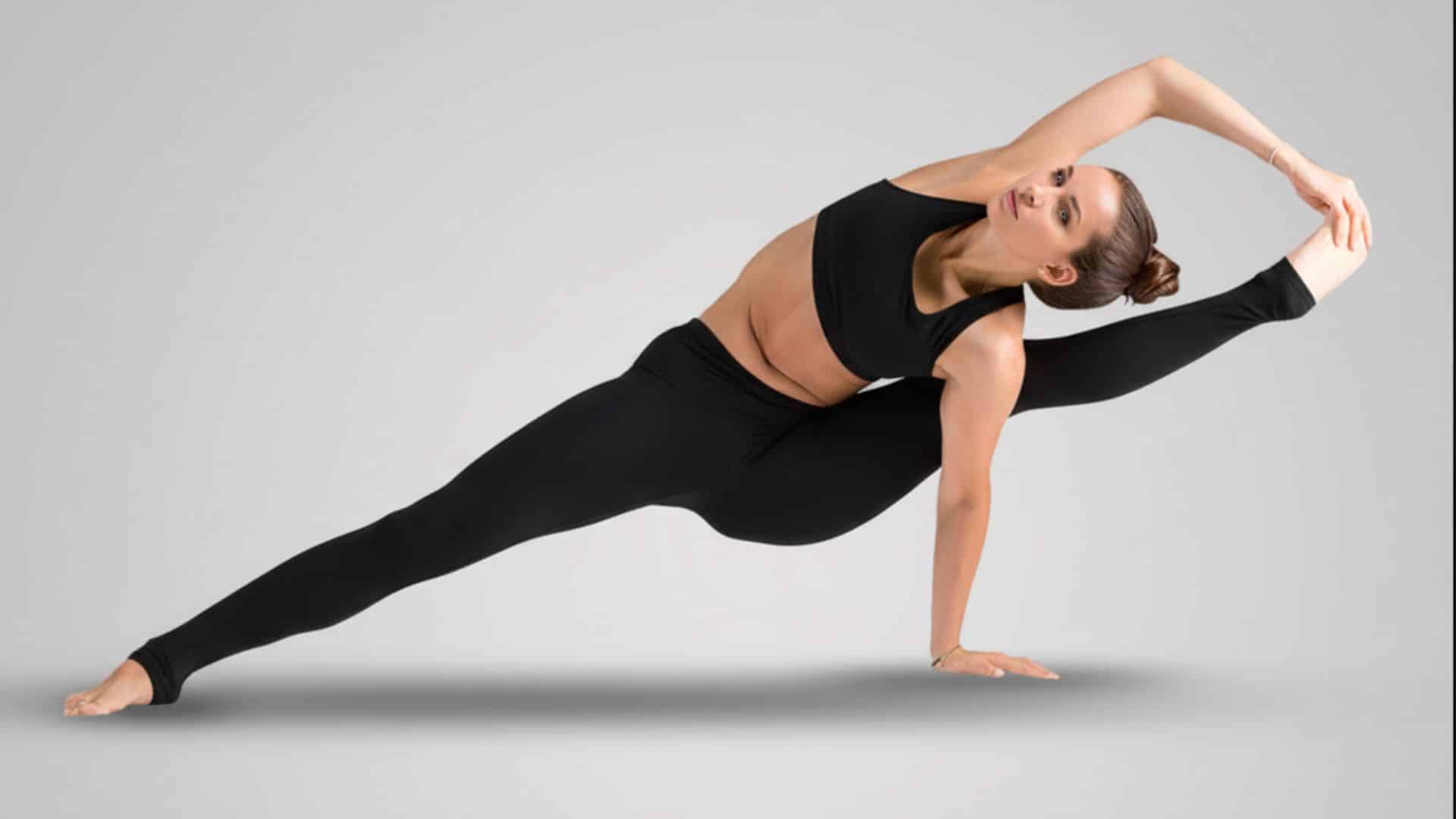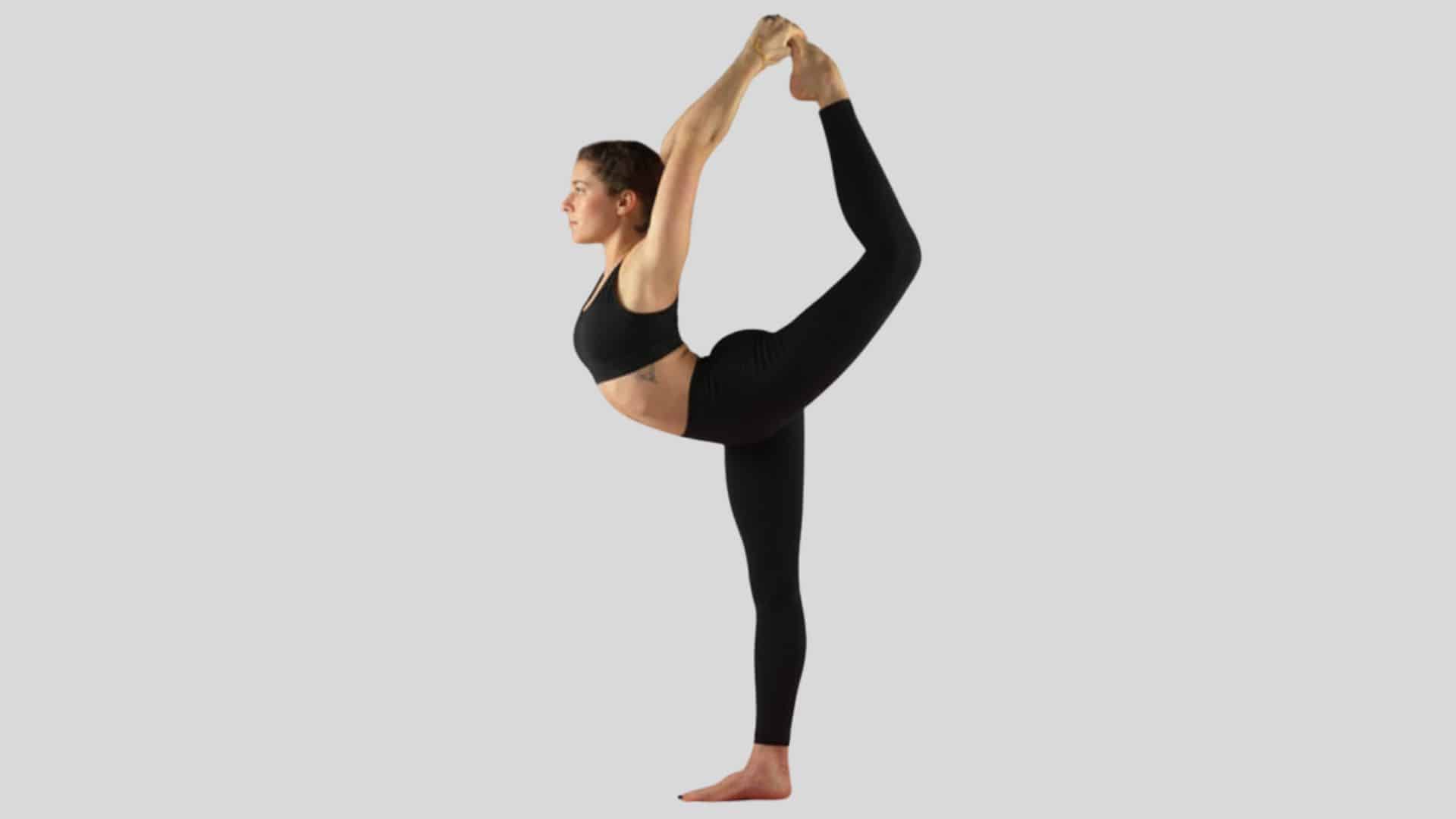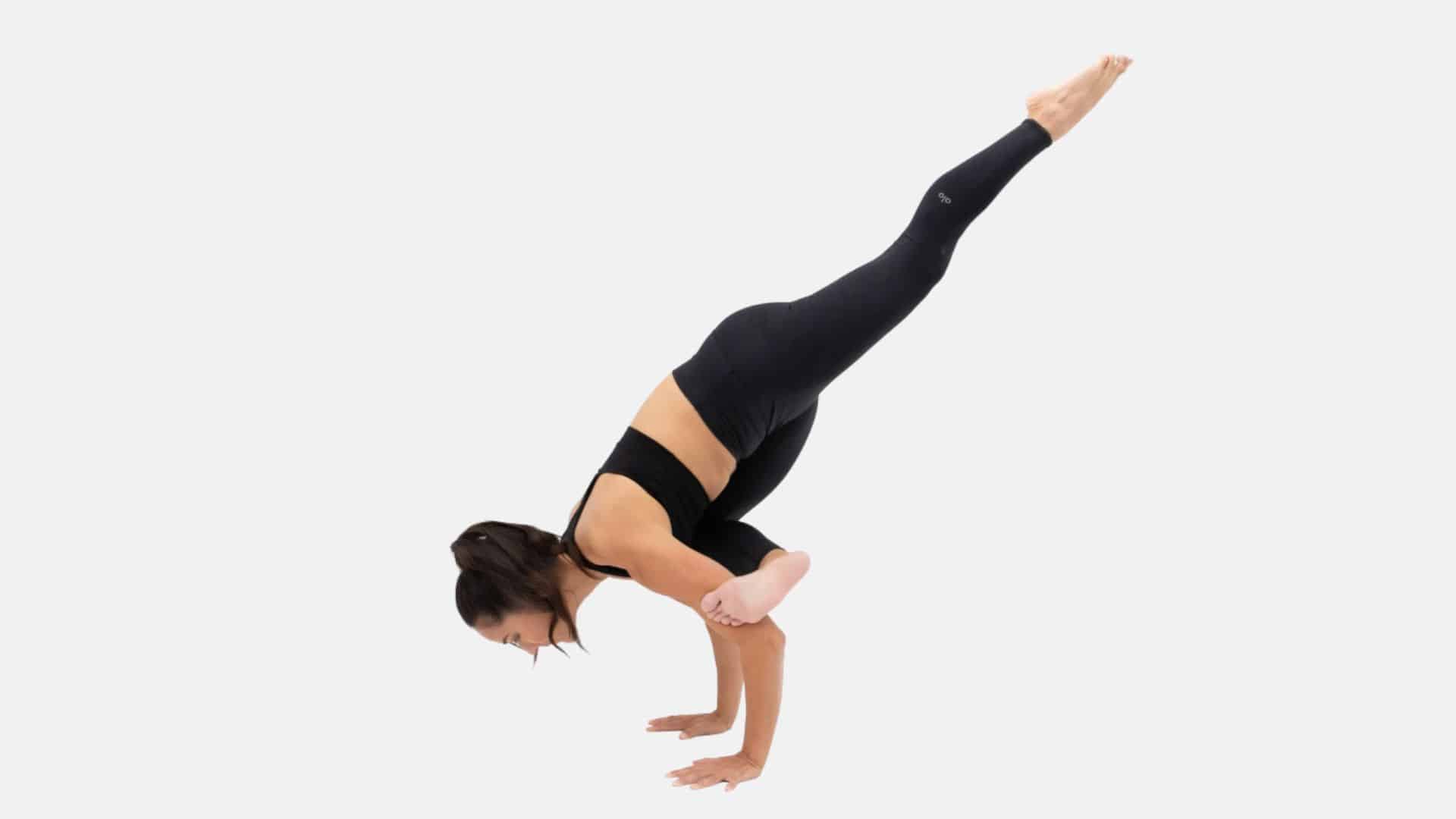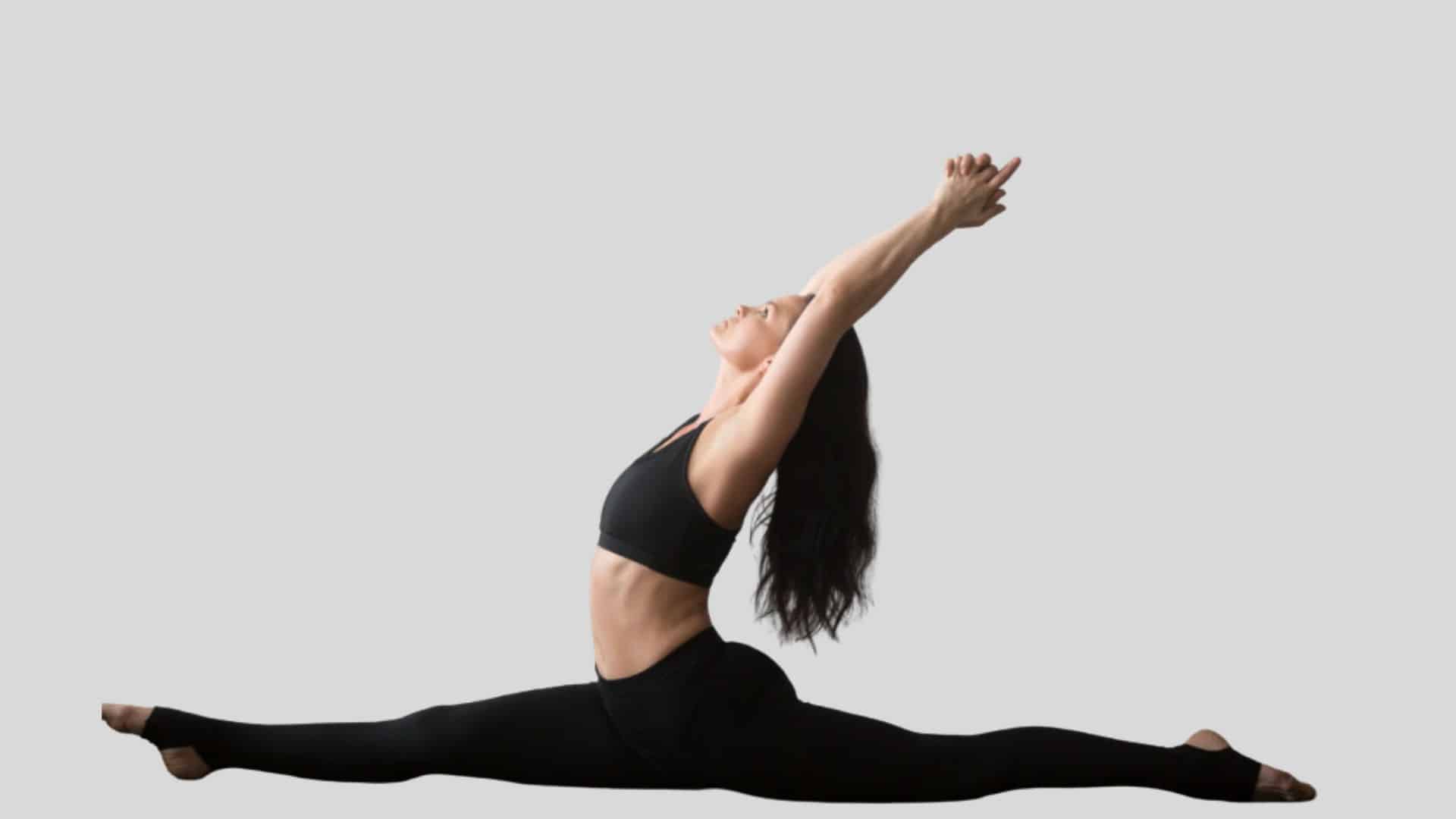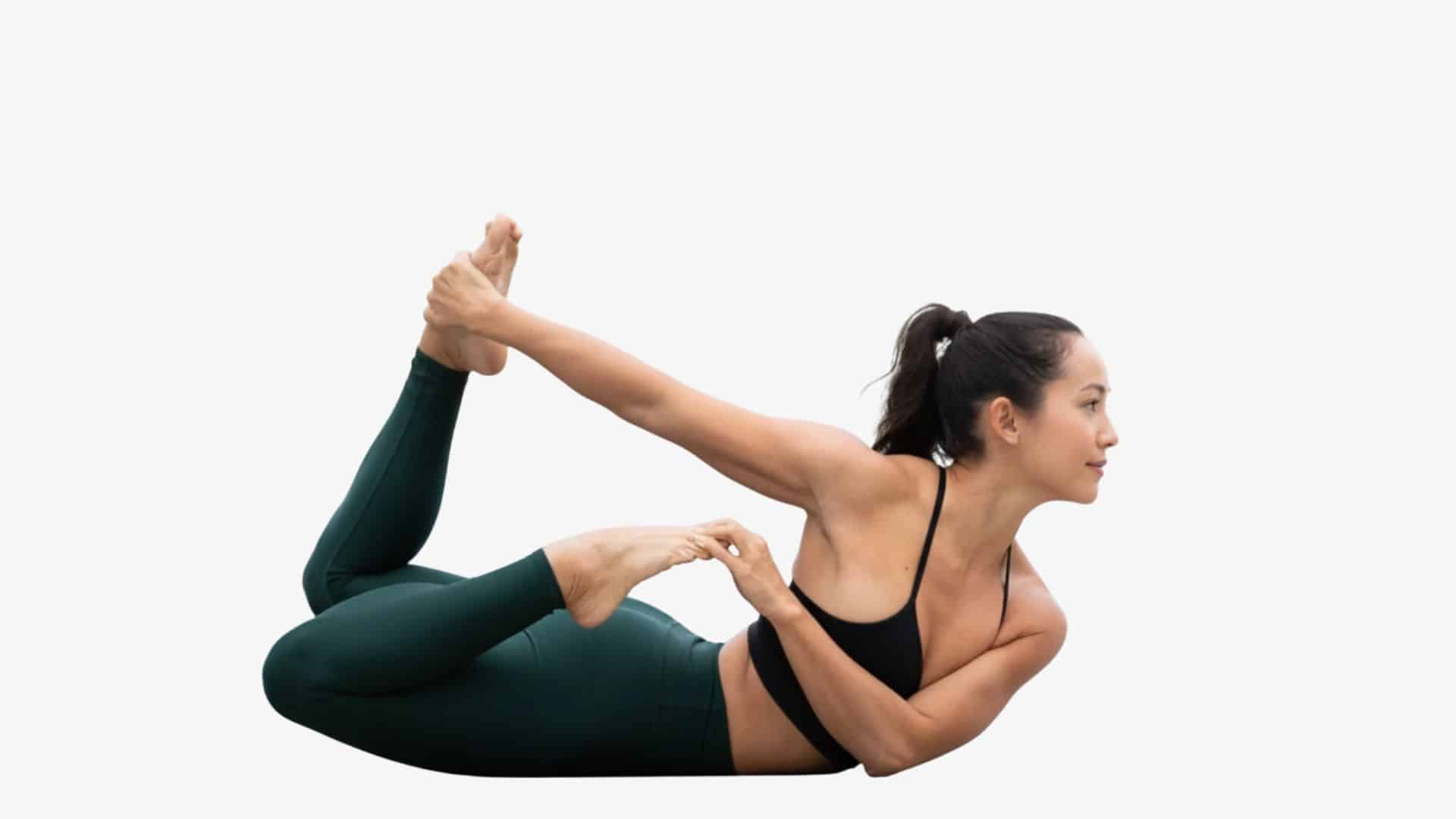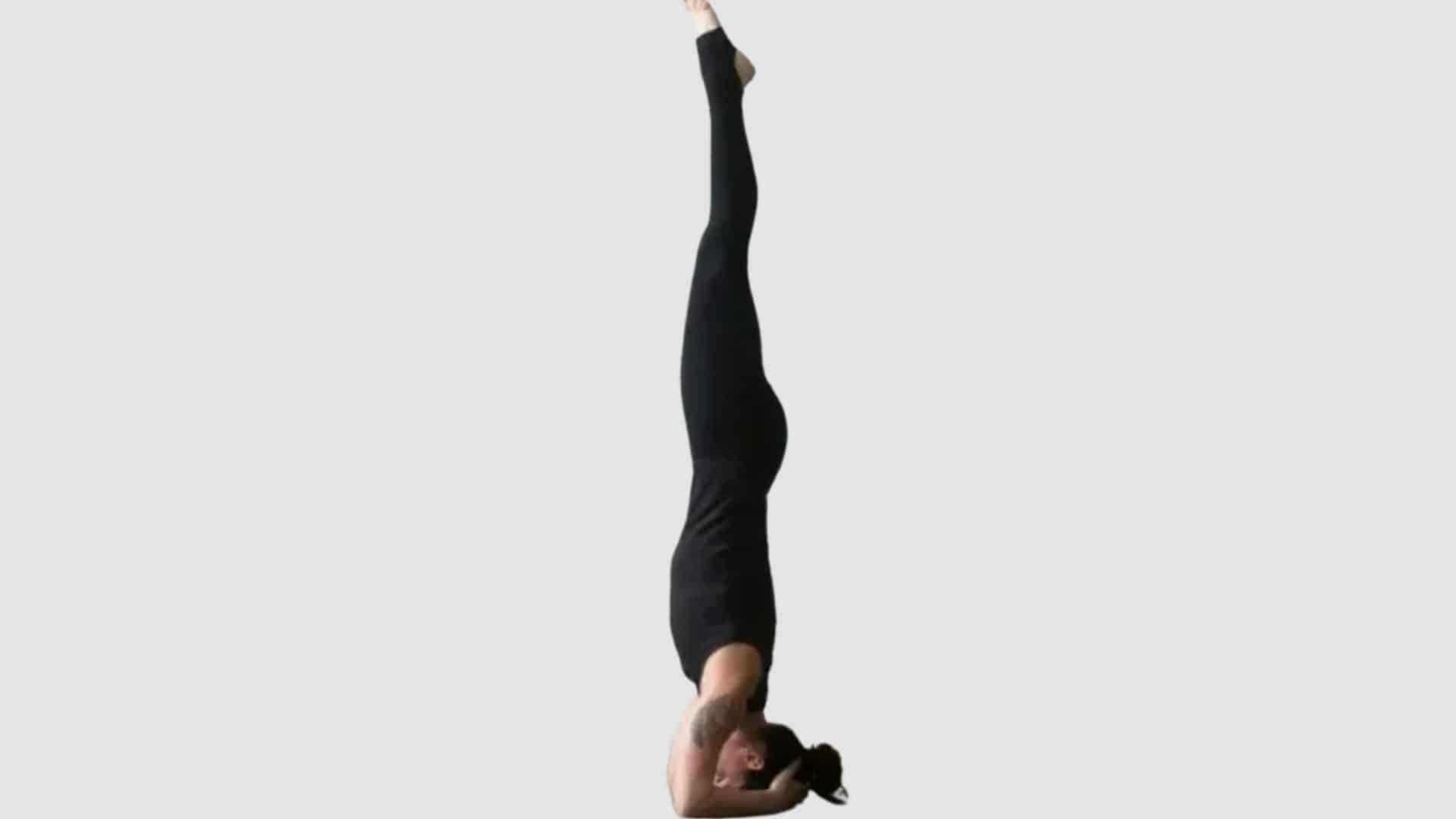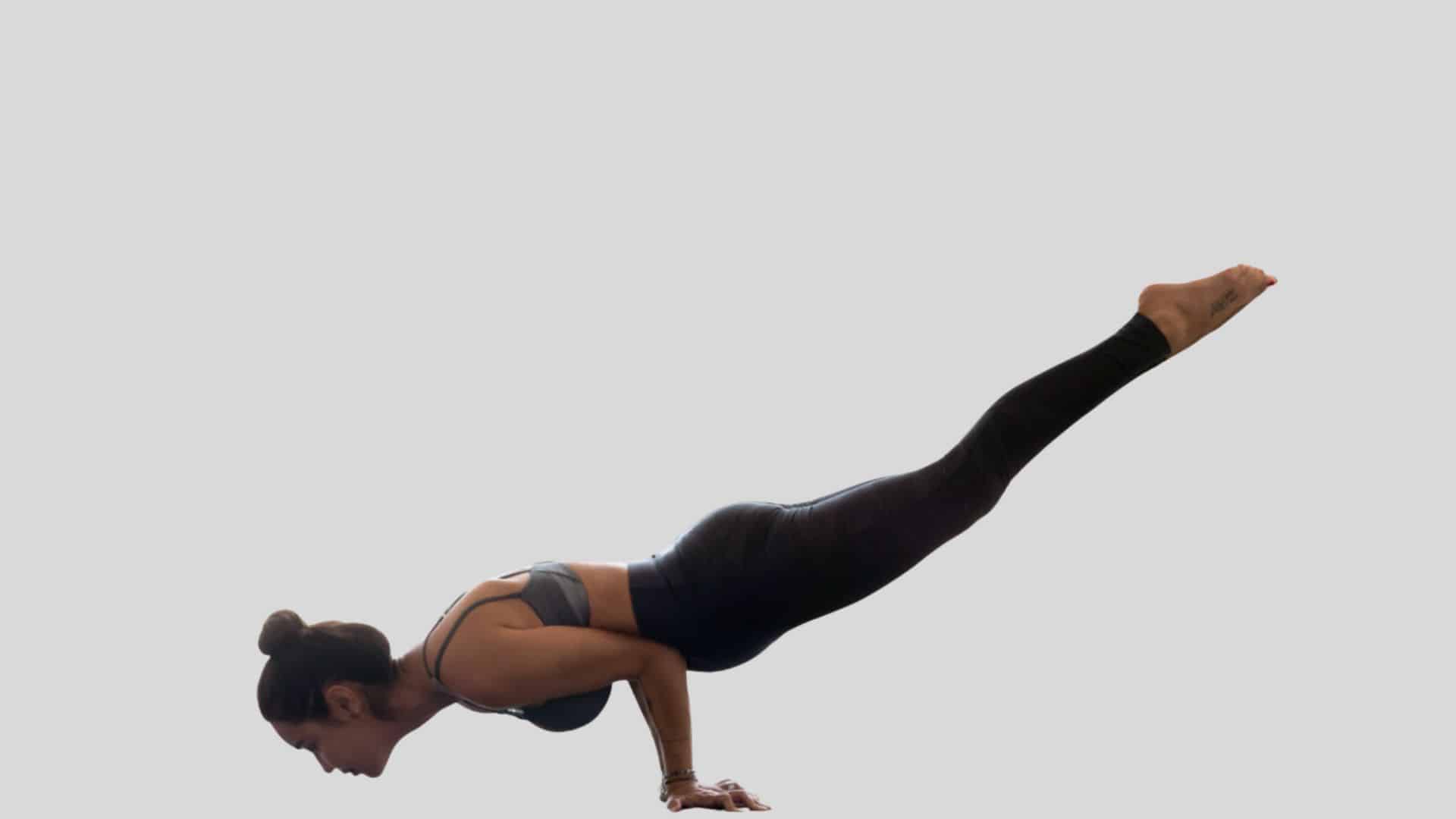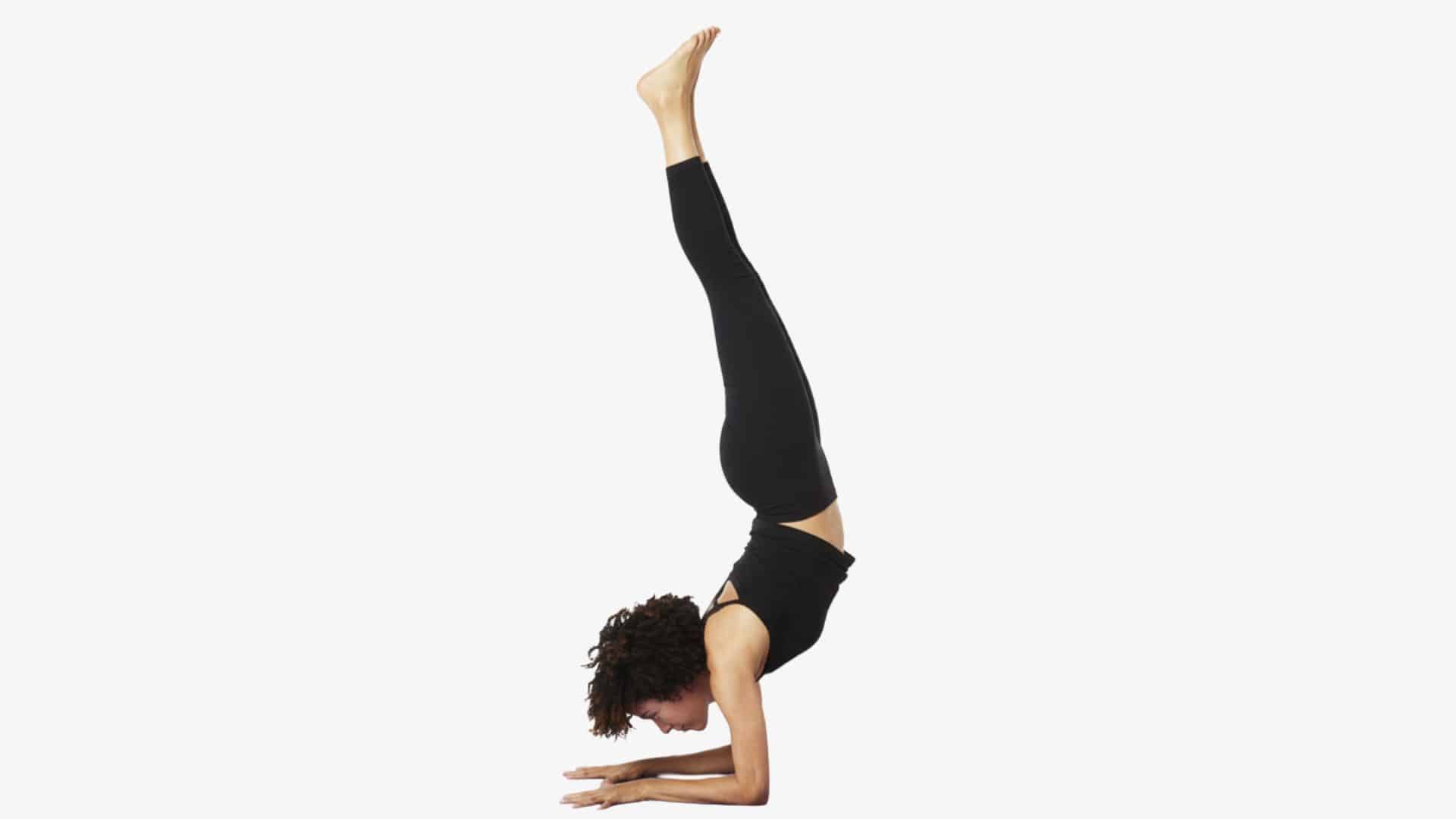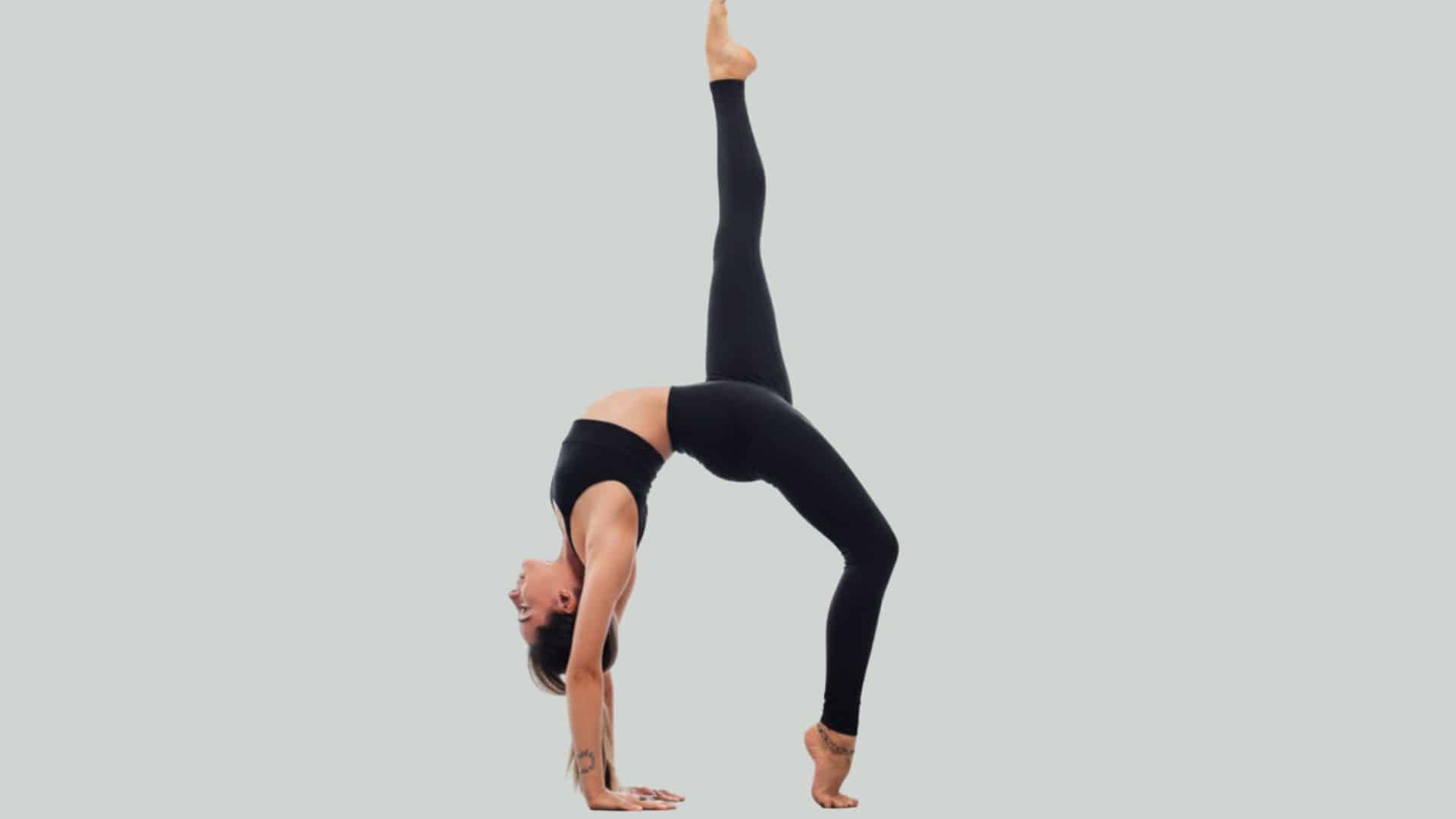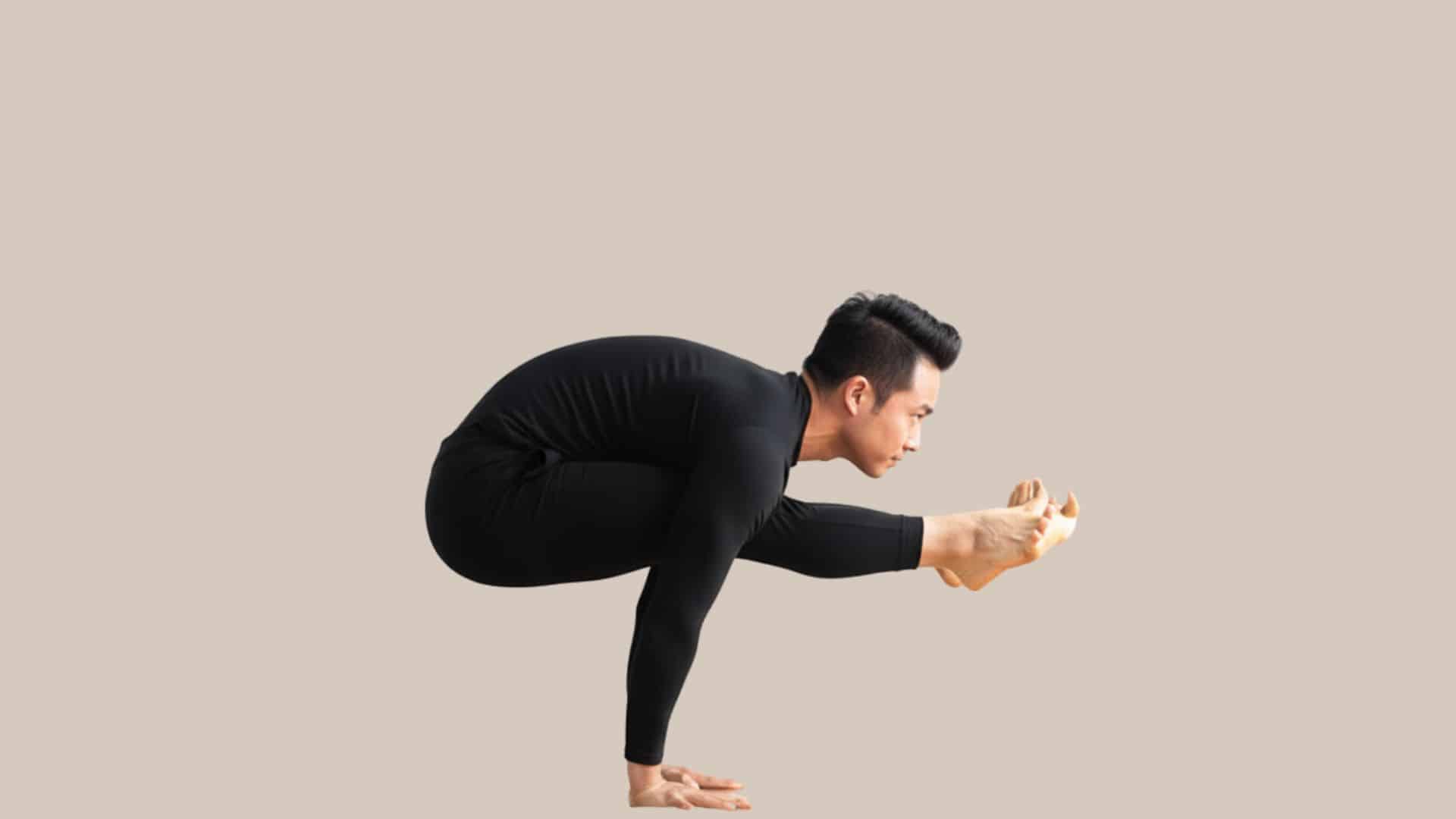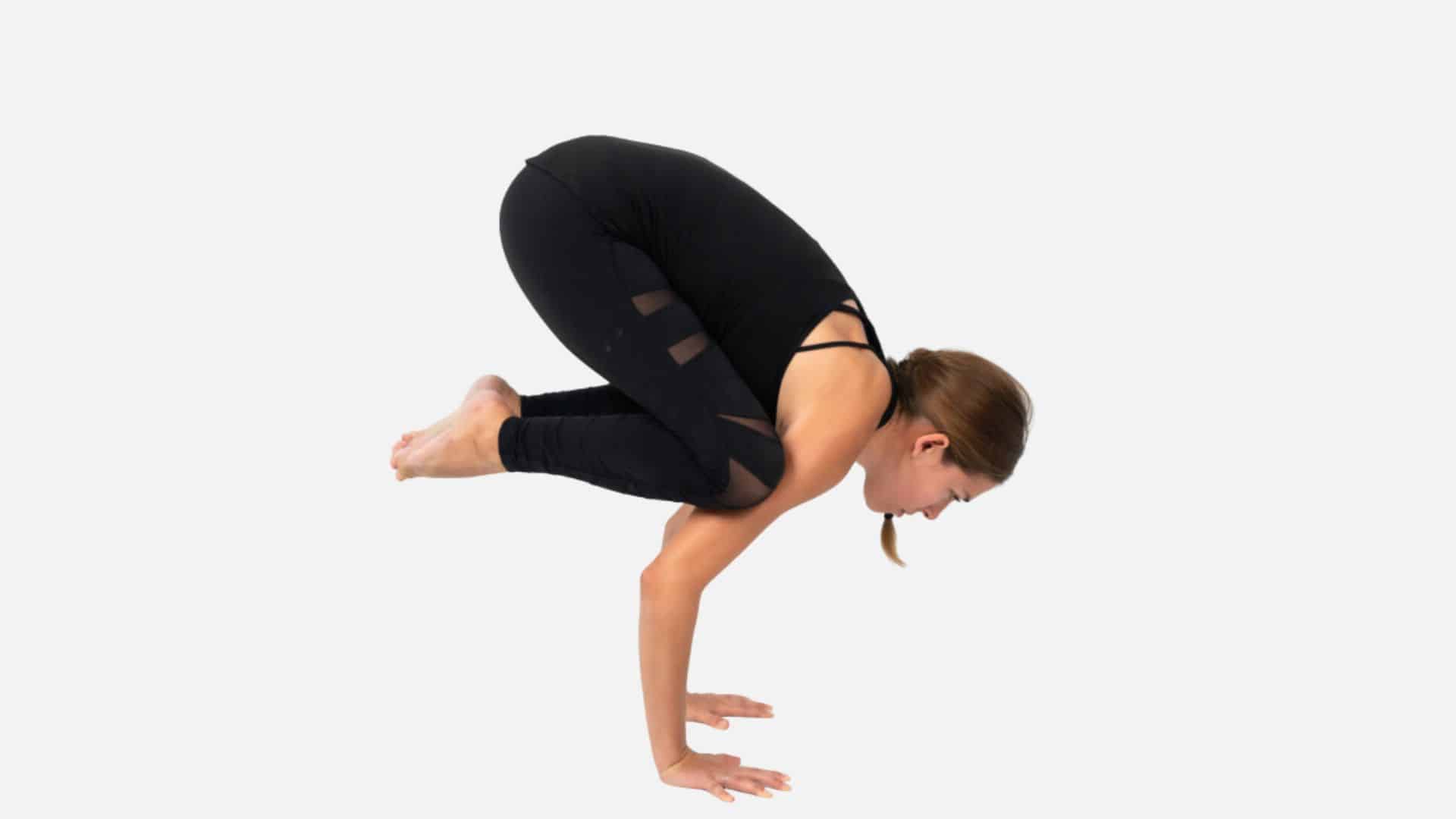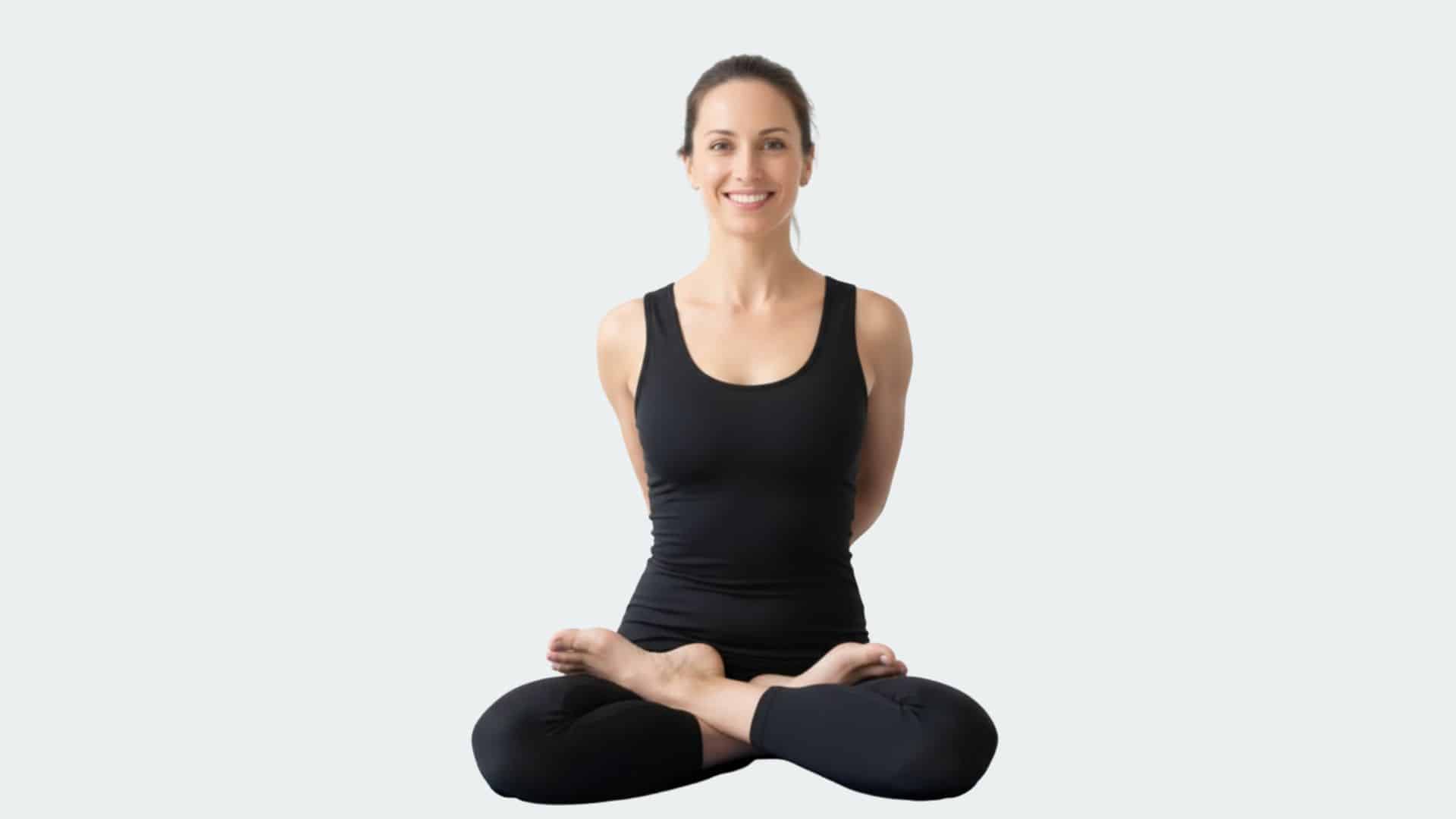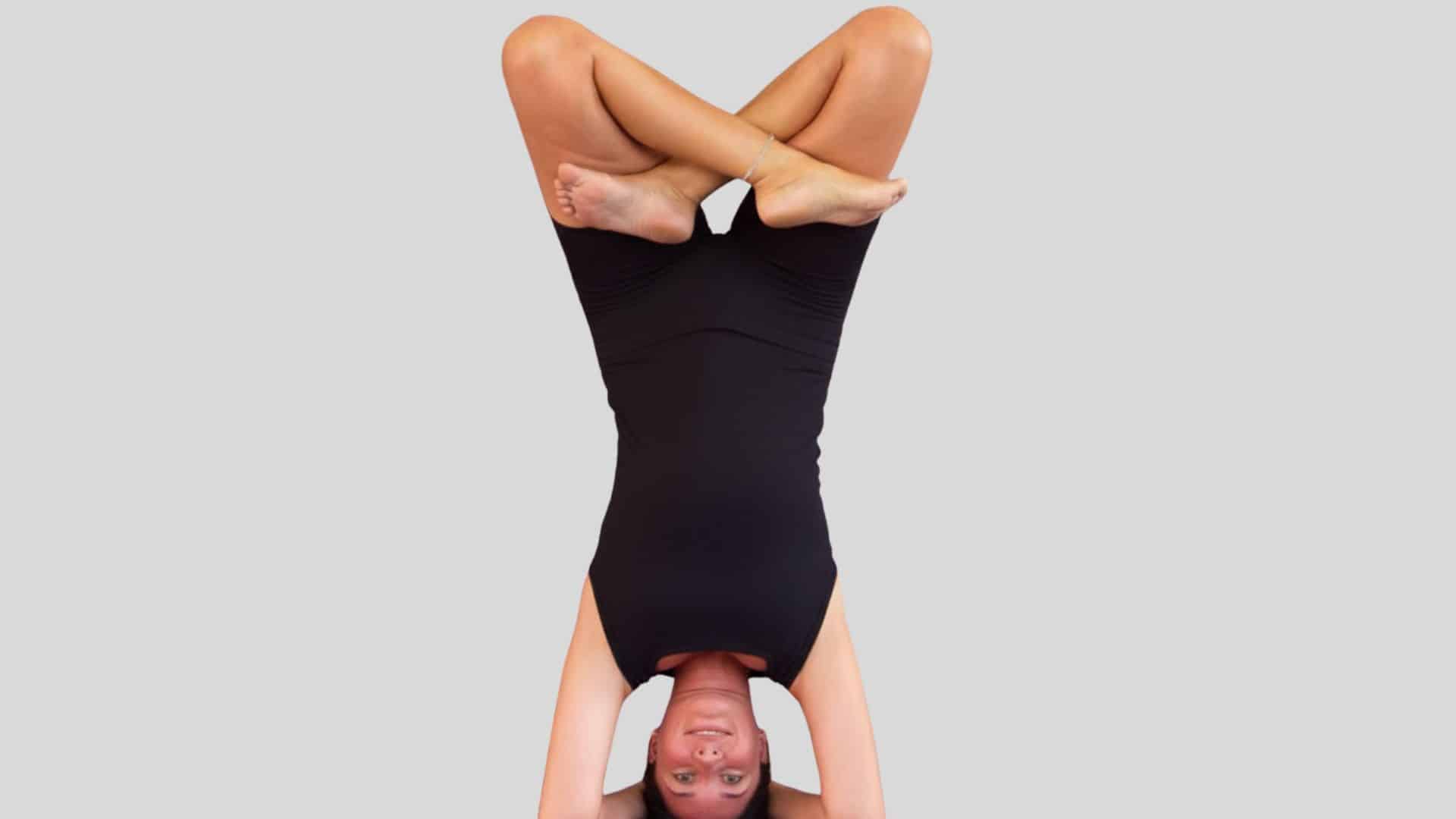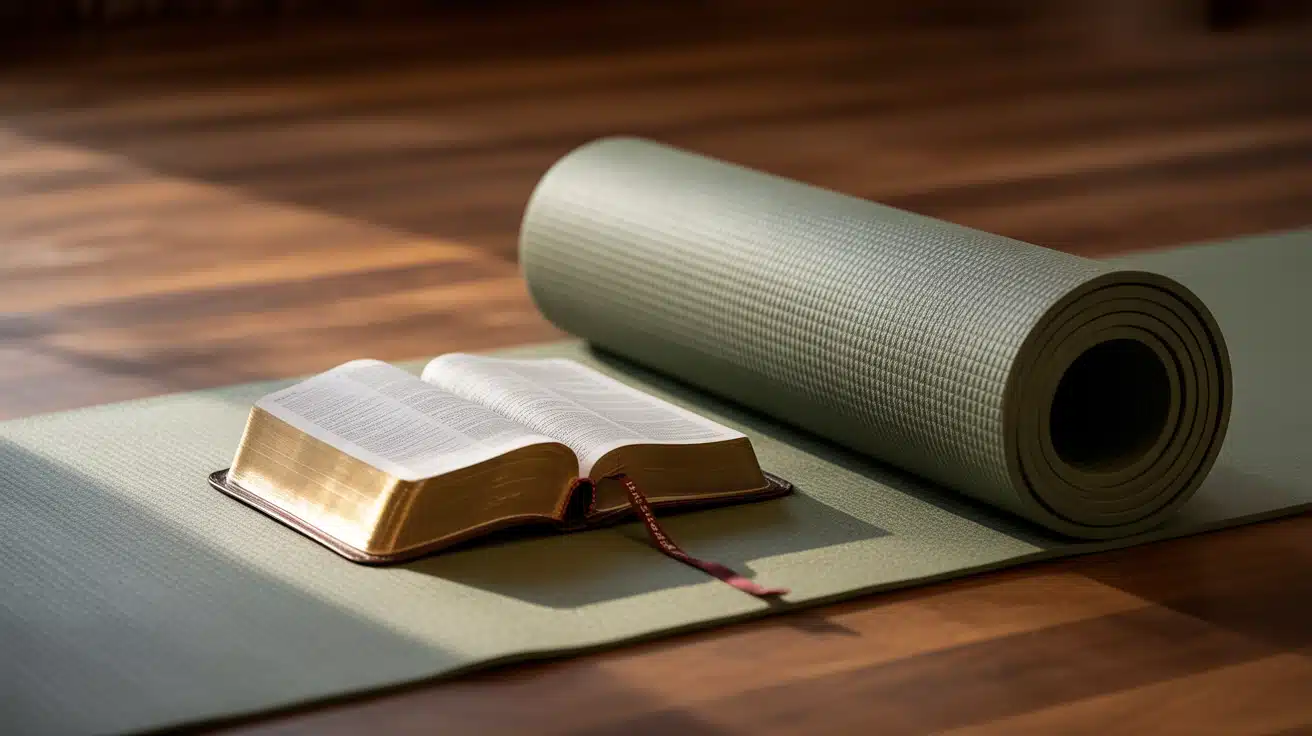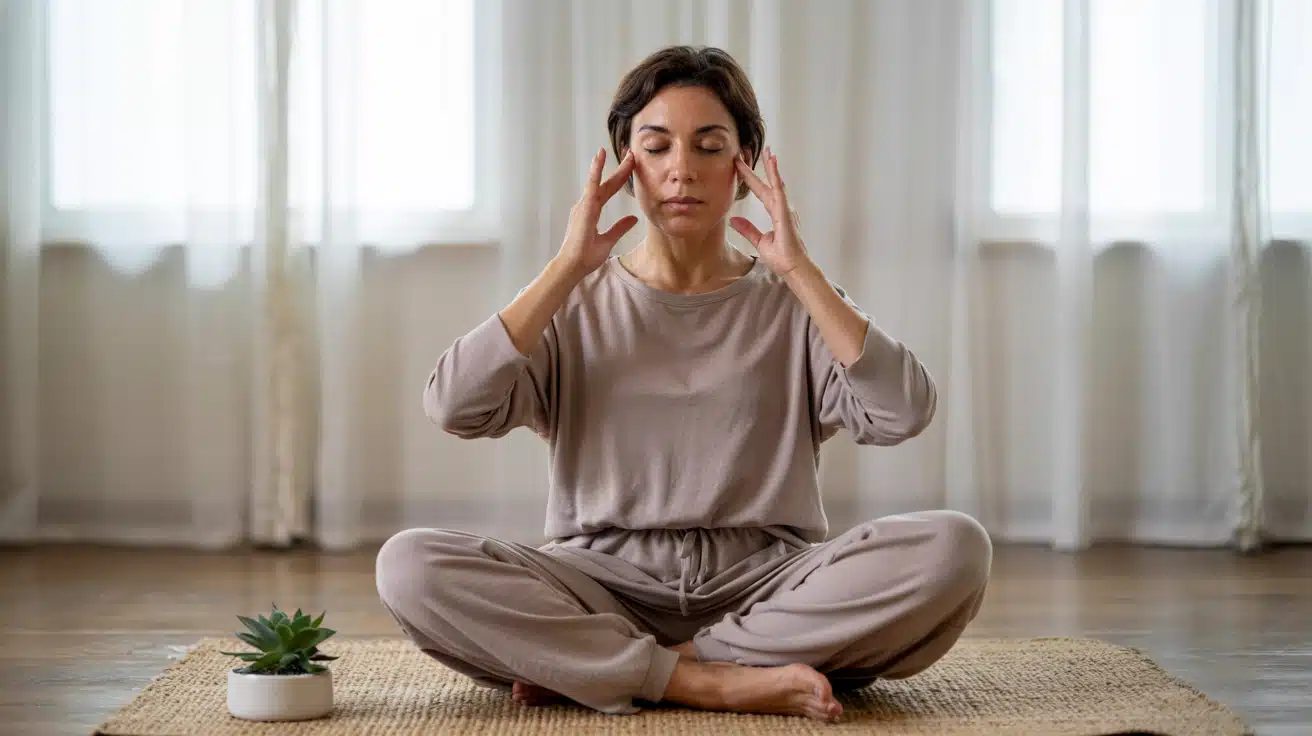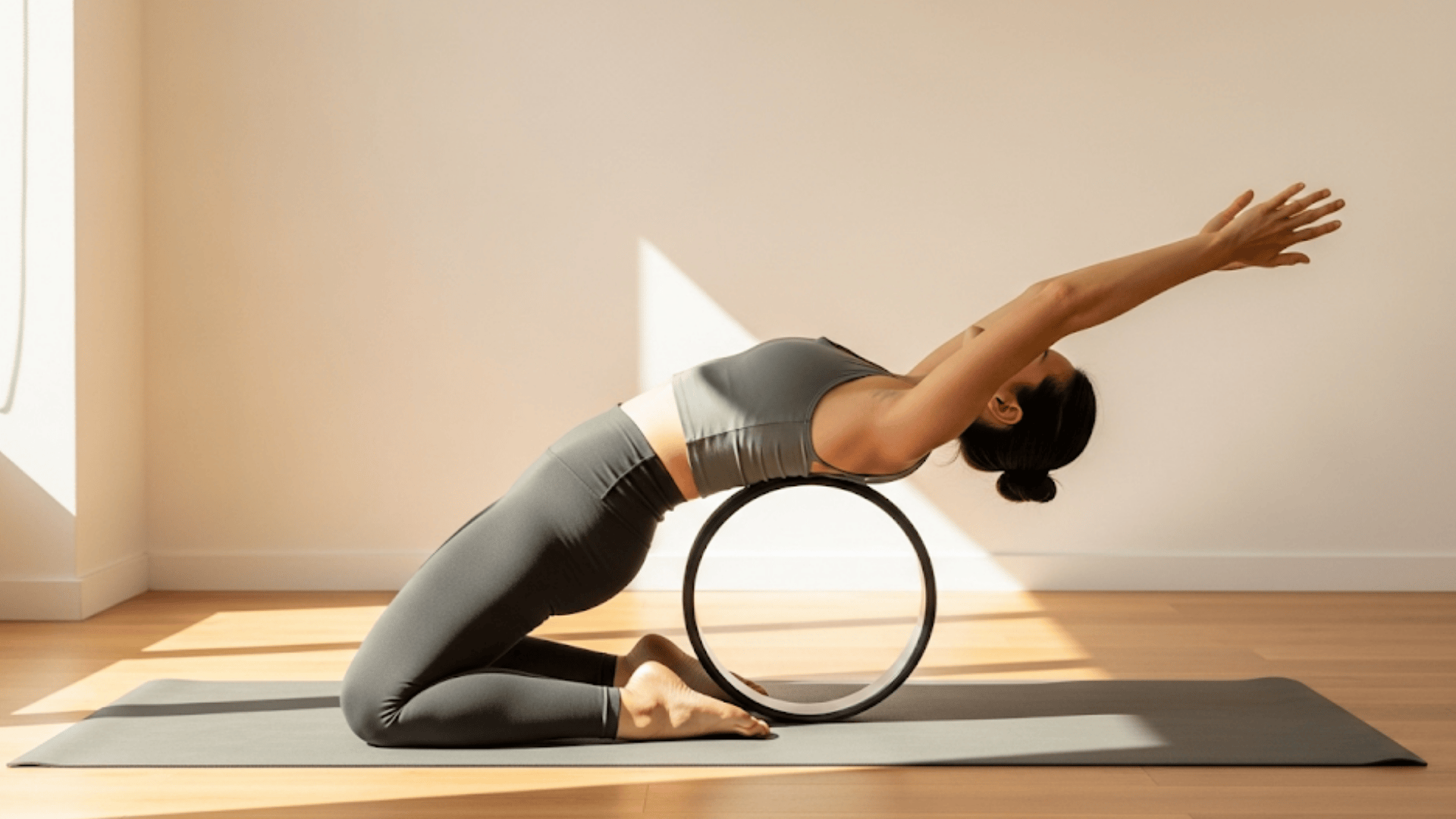Yoga might look calm, but it’s no walk in the park. Behind those steady breaths and graceful poses is a full-body challenge that pushes both mind and muscle.
Thousands of yogis search for “the hardest yoga pose” to challenge themselves.
They want to know what’s possible. They want to understand what separates beginners from advanced practitioners. This curiosity drives people to push their limits.
How do we measure difficulty? Balance matters. Strength counts. Flexibility plays a role. Control over your body makes the difference. Mental focus separates those who can hold a pose from those who fall.
This list of hard yoga poses includes benefits, difficulty factors, and safe training tips. You’ll learn what makes each pose challenging. You’ll understand which muscles do the work. You’ll get practical advice for training safely.
What Makes a Yoga Pose “Hard”?
Not all yoga poses are equal; some challenge your body and mind far beyond basic balance.
- Flexibility is essential for deep stretches, such as King Pigeon.
- Strength is needed for arm balances to support your weight.
- Balance and focus help conquer inversions and fear.
- Some poses combine multiple demands, such as the Scorpion Handstand.
- Injury risk means difficult poses require careful prep.
- Mental trust and patience are key to overcoming fear.
Mastering yoga’s most challenging poses requires time, strength, focus, and respect for your body’s limits.
The 21 Most Difficult Yoga Poses
Here are the yoga poses that separate casual practitioners from serious yogis. Each one tests your body in different ways.
1. Taraksvasana (Scorpion Handstand)
Primary Challenge: Inversion, backbend, and extreme shoulder mobility all at once
Most teachers agree that this is the hardest yoga pose you can attempt. You balance upside down on your hands while arching your back deeply. Your feet reach toward your head. This requires years of practice.
Muscle Groups: Shoulders, core, back extensors, hip flexors
Prep Poses: Start with the forearm stand and wheel pose. Build up to a handstand against a wall. Practice backbends separately before combining them.
Safety Tip: Never attempt this without first mastering a handstand. Use a spotter or wall for support. Your wrists must be very strong.
2. Eka Pada Sirsasana (Foot Behind the Head Pose)
Primary Challenge: Intense hip opening and hamstring flexibility
Your leg wraps around your shoulder and rests behind your head. The hip rotation required goes beyond the normal range of motion. This pose appears in many advanced sequences.
Muscle Groups: Hip flexors, hamstrings, external rotators, core
Prep Poses: Pigeon pose, lizard pose, and seated forward folds prepare your hips. Practice daily for months before attempting.
Safety Tip: Force creates injury here. Your hip socket needs time to adapt. Listen to your body’s signals.
3. Astavakrasana (Eight Angle Pose)
Primary Challenge: Core-heavy arm balance with a twist
You hook one leg over your arm, twist your torso, and lift both legs to the side. Your body forms multiple angles. Core strength determines success here.
Muscle Groups: Obliques, arms, shoulders, hip flexors
Prep Poses: Build strength in the Crow Pose and Side Plank. Practice Chaturanga holds.
Safety Tip: Wrist warm-ups are essential. Start by just hooking the leg without lifting off.
4. Dwi Pada Viparita Dandasana (Two-Legged Inverted Staff Pose)
Primary Challenge: Deep spinal extension plus inversion
You rest on your head and forearms while arching your back. Your chest opens toward the ceiling. This inverted backbend challenges both strength and flexibility.
Muscle Groups: Spinal erectors, shoulders, chest, quads
Prep Poses: Camel pose, Bridge pose, and Supported Shoulder Stand build the foundation.
Safety Tip: Protect your neck by keeping weight in your forearms. Exit slowly if you feel strain.
5. Vrschikasana (Forearm Scorpion)
Primary Challenge: Strength, deep backbend, and balance combined
Similar to Scorpion Handstand, but on forearms. You balance inverted while your feet curve toward your head. This variation offers slightly more stability but remains extremely hard.
Muscle Groups: Shoulders, upper back, core, hip flexors
Prep Poses: Master the forearm stand first. Practice the dolphin pose and the camel pose regularly.
Safety Tip: Build shoulder endurance before holding this pose. Three seconds count as success initially.
6. Kapotasana (King Pigeon Pose)
Primary Challenge: Deep hip, thigh, and spine opening
Don’t let the graceful name fool you. This pose demands intense backbending. You kneel and reach back to grab your feet. Your chest lifts high. Your spine curves dramatically.
Muscle Groups: Quadriceps, hip flexors, entire spine, shoulders
Prep Poses: Regular pigeon pose, low lunge, and bow pose prepare your body.
Safety Tip: Skip this if you have lower back problems. Move slowly into the deepest part.
7. Handstand (Adho Mukha Vrksasana)
Primary Challenge: Core and shoulder strength plus mental control
Kicking up into a handstand looks simple. Holding it steady is another story. Your entire body must align perfectly. Fear of falling makes this mentally tough.
Muscle Groups: Shoulders, core, hip flexors, wrists
Prep Poses: Downward dog, plank holds, and wall walks build necessary strength.
Safety Tip: Use a wall until you can hold for 30 seconds. Focus on stacking your shoulders over your wrists.
8. Eka Pada Bakasana (One-Legged Crow)
Primary Challenge: Arm balance with twist and single-leg control
You balance on your hands like the crow pose, but extend one leg back. The twist increases core demand. Maintaining height becomes much harder.
Muscle Groups: Core, arms, shoulders, obliques
Prep Poses: Master the regular Crow Pose first. Add side crow to your practice.
Safety Tip: Strong wrists prevent collapse. Place a pillow in front of your face while learning.
9. Visvamitrasana
Primary Challenge: Standing arm balance with full-body stretch
One leg extends up and out while you balance on one hand and foot. Your body opens into a side split. Strength and flexibility must work together.
Muscle Groups: Hamstrings, shoulders, obliques, outer hips
Prep Poses: Triangle pose, Extended Side Angle, and Lizard pose prepare the path.
Safety Tip: Your supporting shoulder bears a huge load. Build strength gradually.
10. Natarajasana (King Dancer – Advanced Variation)
Primary Challenge: Balance, backbend, and quad stretch combined
You stand on one leg while reaching back to grab your foot. Pull your leg up high behind you. Lean forward to deepen the backbend. Grace meets difficulty here.
Muscle Groups: Quadriceps, back, standing leg, shoulders
Prep Poses: Tree pose for balance. Bow pose for backbending. Quad stretches daily.
Safety Tip: Keep your standing knee aligned over your ankle. Don’t force the back leg higher than comfortable.
11. Eka Pada Galavasana (Flying Pigeon)
Primary Challenge: Arm balance combined with hip opener
Your shin rests on your upper arm while you tip forward. The other leg extends back. Both hip flexibility and arm strength must be strong.
Muscle Groups: Arms, core, hip external rotators, shoulders
Prep Poses: Pigeon pose opens the hips. The Crow pose builds arm strength.
Safety Tip: Secure your shin before shifting your weight forward. Move slowly.
12. Hanumanasana (Full Split)
Primary Challenge: Front body openness, especially hamstrings and hip flexors
Both legs extend in opposite directions until you sit on the floor. This classic split requires months of consistent stretching and flexibility training. Forcing it causes injury.
Muscle Groups: Hamstrings, hip flexors, inner thighs
Prep Poses: Low lunge, half split, and standing forward fold prepare your legs.
Safety Tip: Use blocks under your hands for support. Progress slowly over weeks or months.
13. Parivrtta Dhanurasana (Twisted Bow Pose)
Primary Challenge: Backbend combined with spinal twist
Lie on your side, grab your feet, and arch your back. The twist adds complexity to an already hard pose. Your chest and shoulders open intensely.
Muscle Groups: Spine, shoulders, chest, quadriceps
Prep Poses: Regular bow pose and supine twists build the foundation.
Safety Tip: Warm up thoroughly. This pose stresses the spine from multiple angles.
14. Sirsasana (Headstand – Full Expression)
Primary Challenge: Strong neck, core, and shoulder control
Balancing on your head seems achievable early on. But the full version requires legs in lotus without wall support. This takes serious skill.
Muscle Groups: Core, shoulders, neck, hip flexors
Prep Poses: Dolphin Pose, Forearm Plank, and Shoulder Strengthening Exercises.
Safety Tip: Never put full weight on your head. Your forearms should support most of your body.
15. Mayurasana (Peacock Pose)
Primary Challenge: Balance on hands with elbows pressing into abdomen
Your elbows dig into your belly while your body extends parallel to the floor. This unusual balance point makes the peacock pose quite hard. Wrist and core strength matter most.
Muscle Groups: Core, wrists, forearms, shoulders
Prep Poses: Plank variations and wrist stretches prepare you.
Safety Tip: Start by just placing your elbows in position. Lift your feet last.
16. Pincha Mayurasana (Forearm Stand)
Primary Challenge: Balance, shoulder mobility, and fear management
You balance inverted on your forearms. Your legs reach straight up. This pose prepares you for Scorpion. Balance is trickier than in a handstand.
Muscle Groups: Shoulders, core, back, hip flexors
Prep Poses: Dolphin pose builds shoulder strength. Wall support helps initially.
Safety Tip: Keep your forearms parallel to the ground. Don’t let your elbows splay out.
17. Wheel Pose to One-Legged Wheel
Primary Challenge: Powerful spinal flexibility
Regular wheel pose already requires good back flexibility. Lifting one leg further tests your strength and balance. Your supporting leg must work harder.
Muscle Groups: Spinal erectors, glutes, shoulders, arms
Prep Poses: Bridge Pose, Camel Pose, and Regular Wheel Pose.
Safety Tip: Press firmly through your hands and standing foot. Keep your neck relaxed.
18. Tittibhasana (Firefly Pose)
Primary Challenge: Deep hamstring flexibility combined with arm strength
You balance on your hands with legs extended wide. Your thighs rest on your upper arms. Many people underestimate the difficulty of this pose.
Muscle Groups: Hamstrings, arms, core, shoulders
Prep Poses: Wide-Legged Forward Fold and Crow Pose prepare you.
Safety Tip: Lean back more than you think necessary. This prevents tipping forward.
19. Crow to Handstand Transition
Primary Challenge: Ultimate control over two poses
This isn’t technically a pose but a transition. You jump from a crow directly into a handstand. The control required represents mastery-level skill.
Muscle Groups: Core, shoulders, hip flexors, arms
Prep Poses: Master both crow and handstand separately first.
Safety Tip: Practice the jump without committing fully to it. Build explosive strength in your core.
20. Baddha Padmasana (Bound Lotus Pose)
Primary Challenge: Flexibility in knees, hips, and shoulders
You sit in full lotus, then reach your arms behind your back to grab your feet. Both hip and shoulder mobility must be excellent. This pose is safe only with great flexibility.
Muscle Groups: Hips, shoulders, knees
Prep Poses: Regular lotus pose and cow face pose for the shoulders.
Safety Tip: Never force your knees into a lotus position. Years of hip opening come first.
21. Padmasana in Sirsasana (Lotus in Headstand)
Primary Challenge: Balance, hip flexibility, and core engagement combined
You hold a headstand while crossing your legs into a lotus position. This requires confidence in both poses separately. Falling out happens easily if you rush.
Muscle Groups: Core, hips, shoulders, neck
Prep Poses: Master headstand and lotus independently first.
Safety Tip: Enter lotus after you’re stable in headstand. Uncross before coming down.
Tips to Safely Practice Hard Yoga Poses
Attempting difficult yoga poses without proper preparation leads to injury. Your body needs time to adapt. Here’s how to train safely.
- Warm up dynamically for 10–15 minutes to protect your muscles and joints.
- Master foundational poses, such as plank, downward dog, and pigeon, before advancing.
- Utilize props like blocks, straps, and walls to support and enhance your practice.
- Balance strength training with mobility and flexibility exercises.
- Seek guidance from experienced teachers to ensure proper alignment and avoid injury.
- Focus on smooth, steady breathing to maintain the right effort and mental calm.
- Progress gradually, consistency over intensity leads to lasting improvement.
With patience and care, your practice will deepen safely and effectively.
Conclusion
These challenging yoga poses test your flexibility, strength, and balance, each requiring months or years to master safely.
Begin where you are; build strength, flexibility, and balance gradually, honoring your unique body and limits. The journey teaches patience, discipline, and body awareness, extending beyond simply achieving the final pose.
Begin with preparatory poses, practice consistently, and track your progress to establish a solid foundation. Remember, falling is part of growth, not failure.
The hardest yoga pose is the one that challenges you today. Try it with patience and dedication, and watch your practice transform into a powerful, personalized journey of strength and mindfulness.

